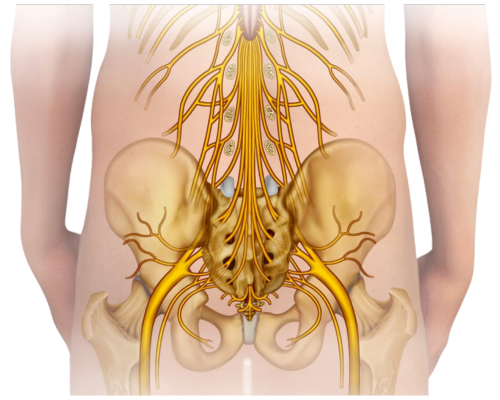Many nerves branch off from the spinal cord in the lower back and bundle together to form the sciatic nerve in the leg. Sciatica is a general term referring to irritation of any of the nerves forming this bundle. Sciatica can involve pain and ‘nerve symptoms' in the lower back and down the legs. This most commonly affects the back of the leg sometimes as far down as the foot. Nerve symptoms can include changes in sensation, pins and needles or weakness in the legs.
Sciatica is usually caused by irritation of the nerves as they exit the spine. This irritation can be caused by nerve compression (sometimes called a ‘trapped nerve') or inflammation around the nerve. This inflammation is part of the body's natural protective system. As the body clears this inflammation the sciatica symptoms usually begin to settle.
- in younger individuals the most common cause of sciatic is injury to the intervertebral discs which can then irritate the nerves as they leave the spine
- in older individuals the tissues around the spine gradually thicken and stiffen. This is part of normal ageing. However, in some people these changes can irritate the nerves as they leave the spine
Research shows multiple factors can contribute to experiencing sciatica. These include:
- being unfit
- being overweight
- smoking
- depression and emotional distress can trigger or increase sciatic pain for some people. This is because emotions, beliefs and worries can affect how we feel pain
In the early stages of a sciatica ‘flare up' many people will experience moderate-severe pain in their leg and/or back. For most people, sciatica will settle on its own over time without any need for specific treatment. This will most often occur within a period of 6-16 weeks. However, because nerves can be very some people may have some symptoms for a number of months.


